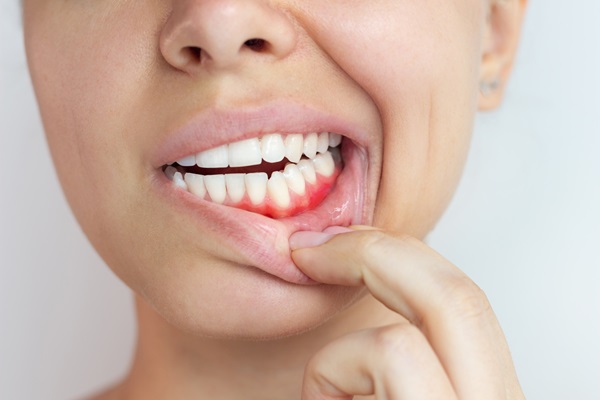How Tooth Decay and Gum Disease Are Connected

Most dental issues (predominantly tooth decay and gum disease) are caused by plaque, a sticky bacterial film. Continue reading to learn how tooth decay and gum disease are connected. This is why bacterial plaque is often the focus of rigorous at-home oral care regimens and regular dental exams.
Bacterial plaque and tooth decay
Plaque bacteria thrive by coexisting in areas where they can easily accumulate in the mouth. If bacteria can build up on the teeth, they begin producing acids from the debris of foods and beverages. Due to the stickiness of plaque, these acids may bond to the teeth and erode the enamel, initiating the process of dental decay. Most of the acid production happens after meal consumption. This means the teeth are at risk of developing plaque within a few minutes after consuming a meal or drink.
Tartar accumulation and gum disease
The same bacterial acids that eat away at tooth enamel may also cause infection of the gum tissue and the bone that supports the teeth. When plaque is not completely removed from the teeth, it hardens into tartar. Tartar accumulation provides a thriving condition for gum disease. It has a cumulative effect — tartar forms as plaque continue to build upon the teeth. As a result, additional plaque adheres to this tartar, and the process continues.
The first and mild form of gum disease, called gingivitis, causes the gums to become red, inflamed, and readily bleeding. Plaque attaches to the tooth and gum line, irritating the area surrounding the teeth. Allowing plaque and tartar to build up along the gumline and behind the gums allows bacterial toxins to destroy the bone and ligaments around the teeth. This leads to the advanced stage of gum disease, known as periodontitis.
The following are some important tips for tooth decay and gum disease prevention:
Fluoride treatment
If the tooth enamel is weak, the teeth will be less able to fight the effects of bacterial acids. However, there is a simple approach to maintaining healthy and strong tooth enamel. Fluoride toothpaste can help remineralize and fortify the enamel. Additionally, the dental professional will inquire about additional fluoride sources, like mouthwashes, supplements, or varnishes.
Maintain excellent oral health care
Poor oral hygiene increases the risk of gum disease and tooth decay. Bacteria multiply faster when they are not cleaned off regularly. Dentists suggest brushing and flossing at least twice daily, making sure to clean the plaque that often accumulates along the gum line and between the teeth.
Once plaque hardens into tartar, it cannot be cleaned off with a toothbrush. Therefore, patients need to visit the dentist regularly for cleaning and checkups. Before more severe dental problems develop, the dental professional will discover and treat any decay or gum issues during these sessions.
The bottom line
The one thing connecting gum disease and tooth decay is bacterial plaque. With a diligent personal oral care routine and regular visits to the dentist, you can maintain good oral health.
Request an appointment here: https://www.springfieldmoderndental.com or call Modern Dental of Springfield at (217) 321-4552 for an appointment in our Springfield office.
Check out what others are saying about our dental services on Yelp: Gum Disease in Springfield, IL.
Related Posts
Preventive dentistry focuses on the prevention and early detection of oral health concerns to help ensure they do not develop or progress to a more severe stage that is harder to treat. One of the primary goals of preventive dentistry is to help patients care for their teeth between check-up visits, which should include proper…
Many people would shiver at the thought of wisdom teeth removal, probably because of the rumors they have heard about the procedure. But not to worry; wisdom teeth removal is a simple and easy process. Since wisdom teeth are the last to erupt later in life, many people do not have enough information to determine…
All-on-4® implants refer to a procedure where the patient gets four posts attached to their jawbone to insert dentures for a simple, quick, and long-lasting smile. They are growing in popularity due to their permanence and effectiveness. There are some things to consider before getting an implant surgery, with one of the most significant components…
Same day dentistry offers a great option for those who want dental implants in one day. This is a better version of traditional implants that need a long time to finish. Most people do not have the time to spend at the dental clinic. Schedules tend to overlap. Patients tend to miss the visits for…
